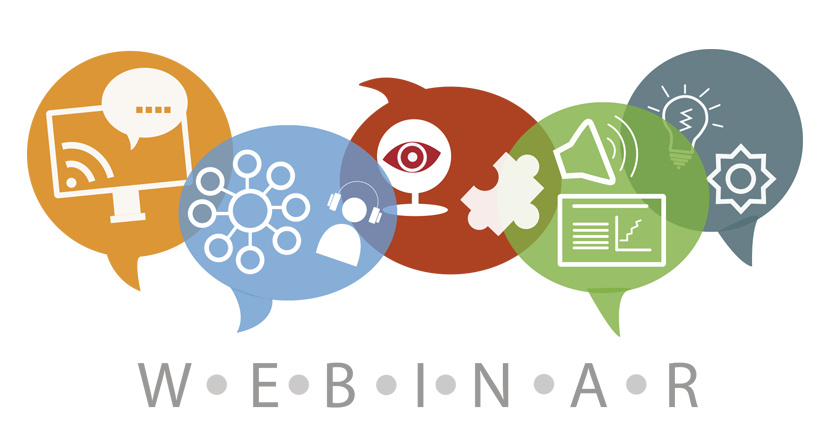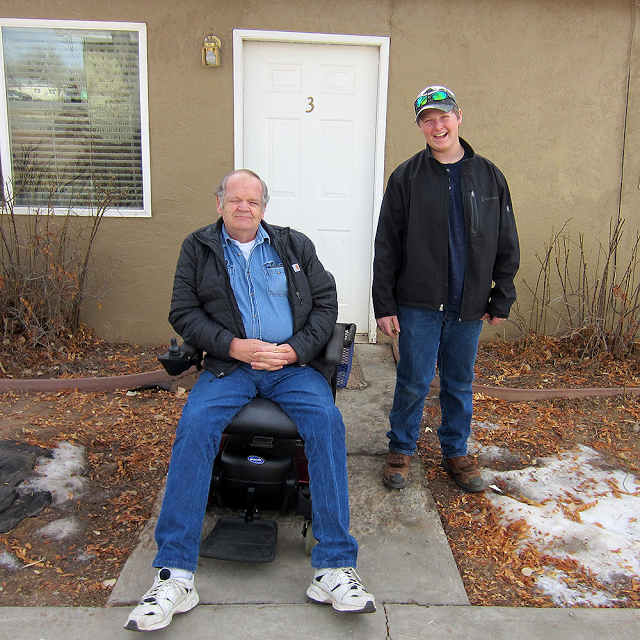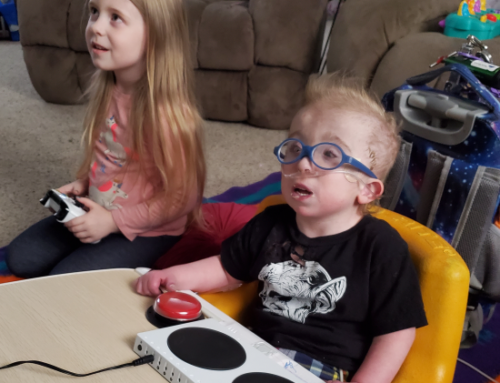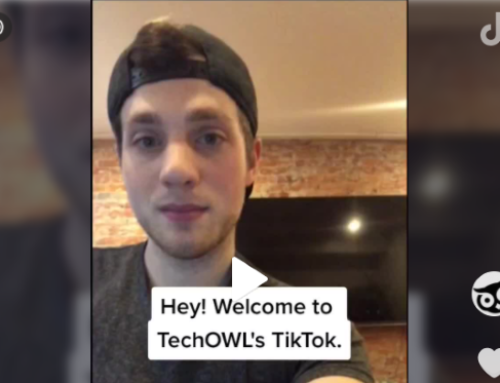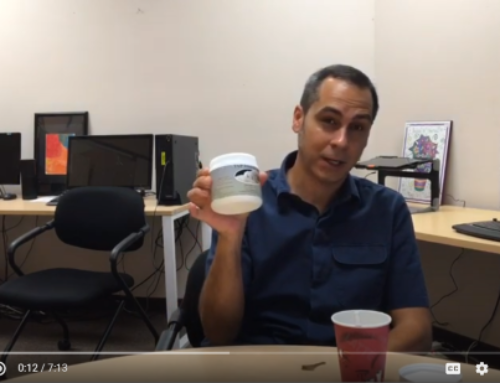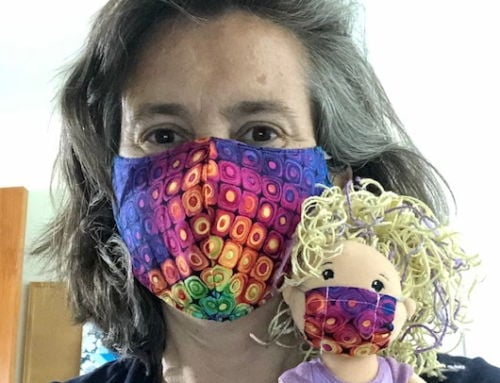ATIA 2018 Embraces the Assistive Technology (AT) Maker Movement
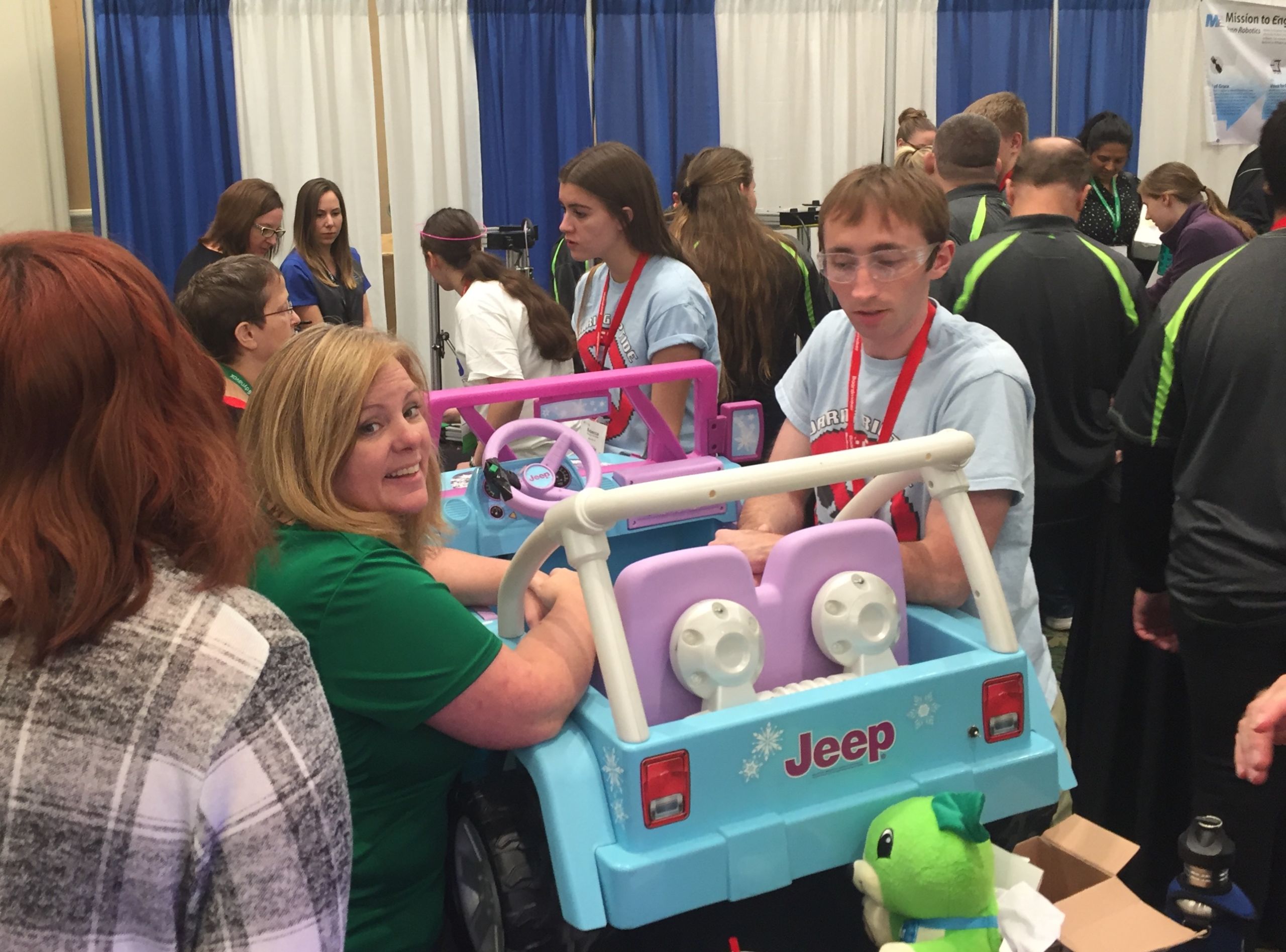
On Saturday, February 3rd, something out of the ordinary took place at ATIA 2018, the conference and expo of the Assistive Technology Industry Association. ATIA formally embraced the AT maker movement.
At the back of the exposition hall, 3D printers hummed, corrugated plastic was folded and taped, and soldering irons lent a whiff of molten alloy to the air. Beyond the usual vendor booths of braille notetakers, wearable smart glasses, and other cutting-edge products designed for individuals with disabilities, adults and young people were busy making, talking and even playing with one another.
Welcome to the first-ever ATIA Maker Day.
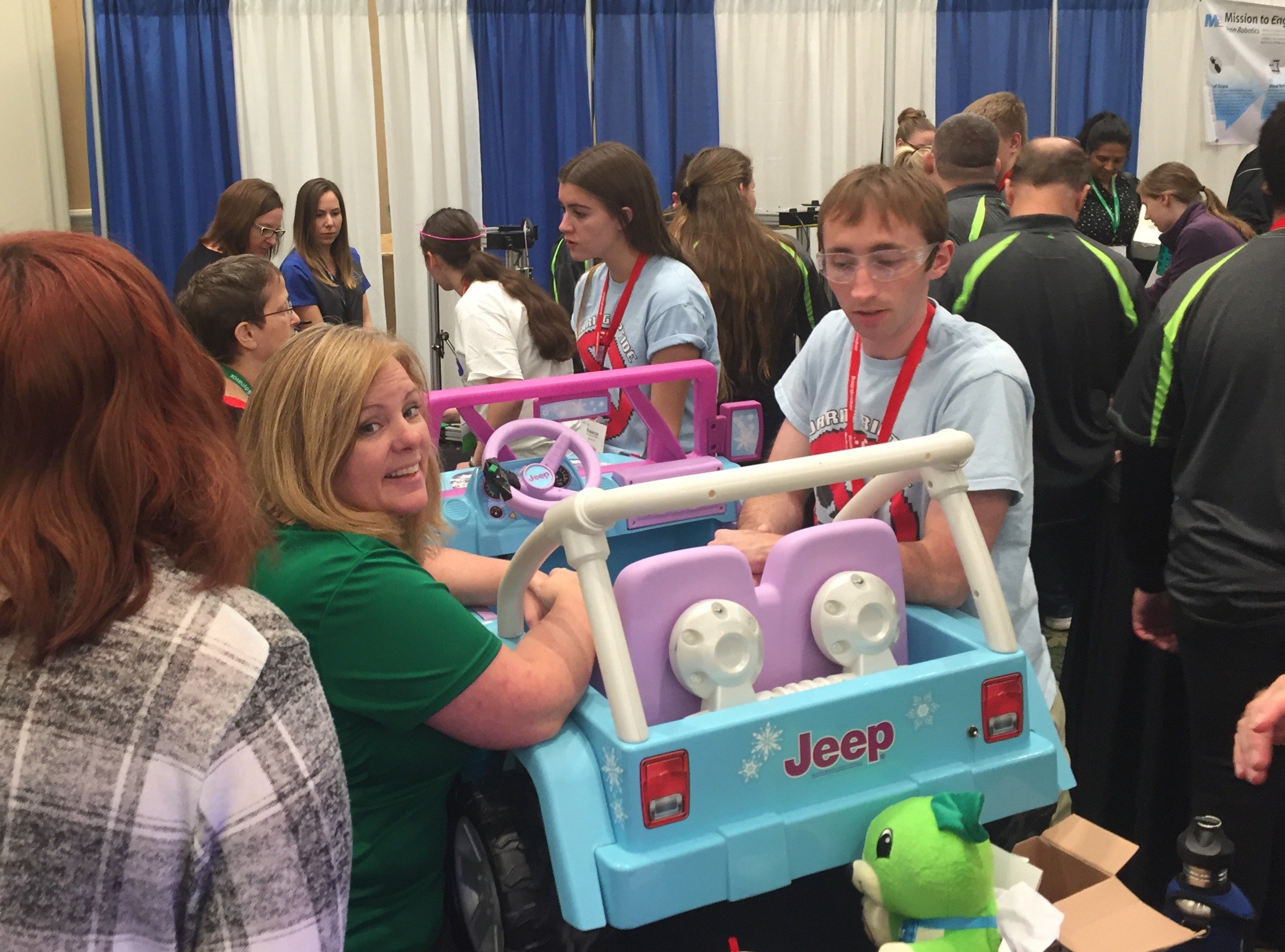
University of Florida BOTS and FRC Team 4118: Roaring Riptide working on a GoBabyGo 12V car adaptation for a Florida device loan library. The car will have a jack compatible with a variety of switches for children with different access needs.
The day was the brain-child of ATIA CEO David Dikter, inspired and powered by Bill Binko. Binko is the founder of ATMakers.org and the symbol system LessonPix.
“We’ve been talking for a couple of years now about the maker movement that Bill has been involved with, connecting high school and college kids with assistive technology projects,” Dikter explains. “I knew that a day like this could be really exciting.”
Standing in the packed exposition hall, veteran ATIA presenter Beth Poss agrees. “I’ve never seen so much traffic at ATIA on a Saturday. My gut take is this is the best thing to happen to ATIA in years!”
Some of the maker-leaders were ATIA regulars. Judith Schoonover from the Loudon County Virginia AT Team showed how to build low-tech tools for children with disabilities to make art. Therese Willkomm and Stacy Driscoll from ATinNH shared how to build smartphone and tablet computer stands from reclaimed corrugated plastic (plus more AT maker wisdom).
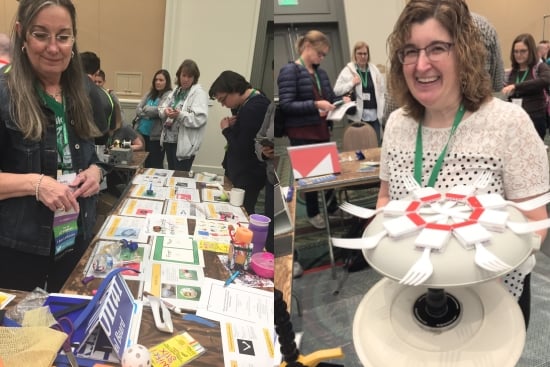
Left: Judith Schoonover with her maker station for art access. Right: Stacy Driscoll shows off one rotating solution for eating sushi (or other bite-sized meals).
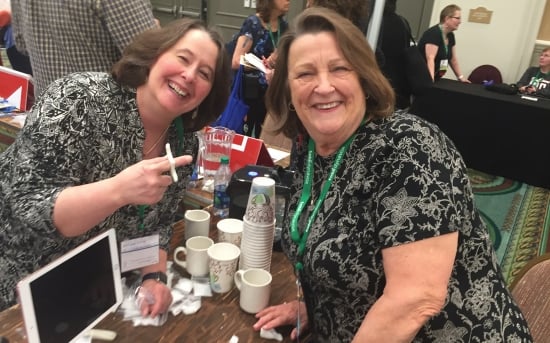
Left to right: Therese Willkomm and Joy Zabala at the InstaMorph station. Willkomm shows off a fidget spinner on her forefinger.
Others were ATIA “newbies”: middle, high school and college robotics teams building devices, teaching techniques and explaining to visitors how they came to be AT makers and attend ATIA.

David Dikter, ATIA CEO, chats with high school robotics team members and coaches.
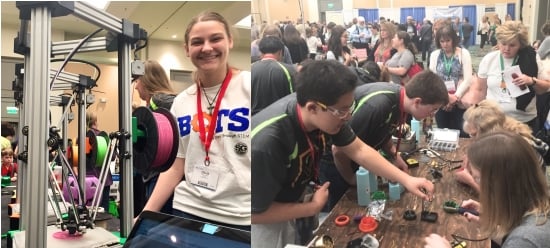
Left: Olivia Stack of the University of Florida’s BOTS demonstrates 3D printing. Right: Orange County Technical college students (GRA-V Robotics) teach soldering.
Binko, they say, was instrumental. The ATMakers.org mission is to connect local makers, such as robotics teams and maker clubs, with AT projects needed by real people in their communities. Most of the students at ATIA Maker Day were invited by Binko to show off their inventions and projects: the door opener for a child who uses eye-gaze, the wheelchair controlled by a single finger….

Penn High School Robotics (FRC Team 135) with their AT project models. In 2017, the team created Mission to Engineer, an effort to spread AT making to other robotics clubs.
Some of the teams had also taken part in a recent hack-a-thon to make toys switch-accessible.
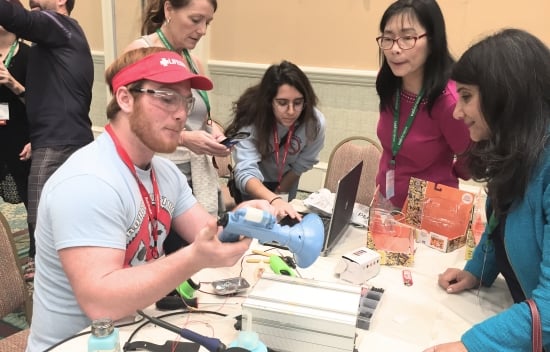
Sheena Jaffer (far right) of the AT Program for DC learns about making switch-accessible fart guns from PK Yonge Developmental Research School students (FRC Team 4118: Roaring Riptide). “For someone like me who was born in Africa,” Jaffer reflected, “this creativity is very important. Because there may come a time when you cannot afford something.”
Binko is an engineer and ATIA vendor. He launched ATMakers.org in response to his frustrations with the Medicaid funding process. Active on social media, he found families reaching out to each other looking for assistive technology for their children with, often, unique individualized needs. He’d had this experience as a parent, himself. He knew he could help.
“There isn’t a product for everything,” Dikter emphasizes.
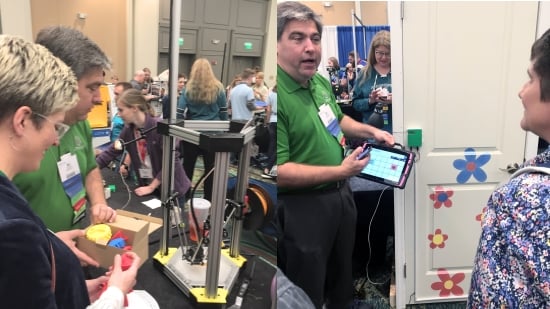
Left: Bill Binko and Lori Geist discuss 3D printed communication symbols to support students with visual impairments. Right: Binko shows off an eye gaze-triggered 3D printed door opener to Kathy White.
In the exhibition hall on Maker Day families found more than just products for their children with disabilities. They met other young people, students eager to talk about building assistive technology. At the “learn to make” stations, they discovered new ways to be makers themselves, devising tools for daily living. “This isn’t hard! We can do this!” they were heard to say.
Yet the lessons of ATIA Maker Day went far beyond direct instruction. Mike Marotta, Director of the NJ state AT program, observed a two-fold impact. “First is the effect of connecting a group of young people who may not know about disability to the AT world and sparking their interest. Second is an even more powerful effect I’m seeing here: the AT field realizing these kids exist! These makers, these robotics clubs, and how they can help us.”
Beth Poss reported a moment at the 3D printers that drives home this point: “There was Karen Erickson coming across high schoolers printing 3D symbols from her Project Core. And she was saying, ‘Oh my gosh!’ Because she had no idea this was happening here.”
Still, the lessons of Maker Day were also familiar. “We started here,” Joy Zabala (creator of the SETT framework) reminds us. “We started with making AT for our students. It’s what we’ve always done and now it’s come full circle.”
Dikter agrees. “AT making has been a part of our culture of community since the beginning of time. It’s a part and piece of us.” He rejects the notion that AT making is disruptive to the industry. “People used to say the iPad was disruptive. But technology is changing things, 3D printing is changing things. We have to accept the technology is here and consider how it fits into our community of companies, our community of practitioners, our community of users of technology.
“For me, it’s amazing to see these young high school and college science and math kids have this experience around disability. We know they will carry this with them throughout their lives and careers. We don’t know the implication for how their efforts today will impact the products of tomorrow. To me, that is the most powerful thing.”
Learn more about ATIA Maker Day from ATMakers.org
Save the date for AT Makers for All in NH September 29th, 2018!
Monthly Blog Digest
Search the blog
State AT Program Blogs
California
Florida
Indiana
Kentucky
Louisiana
Maryland
Massachusetts
Michigan
Montana
North Carolina
North Dakota
Utah
State AT Program Blogs
The AT3 Center, the Association of AT Act Programs (ATAP), and the Administration on Community Living (ACL) make no endorsement, representation, or warranty expressed or implied for any product, device, or information set forth in this blog. The AT3 Center, ATAP, and ACL have not examined, reviewed, or tested any product or device hereto referred.

